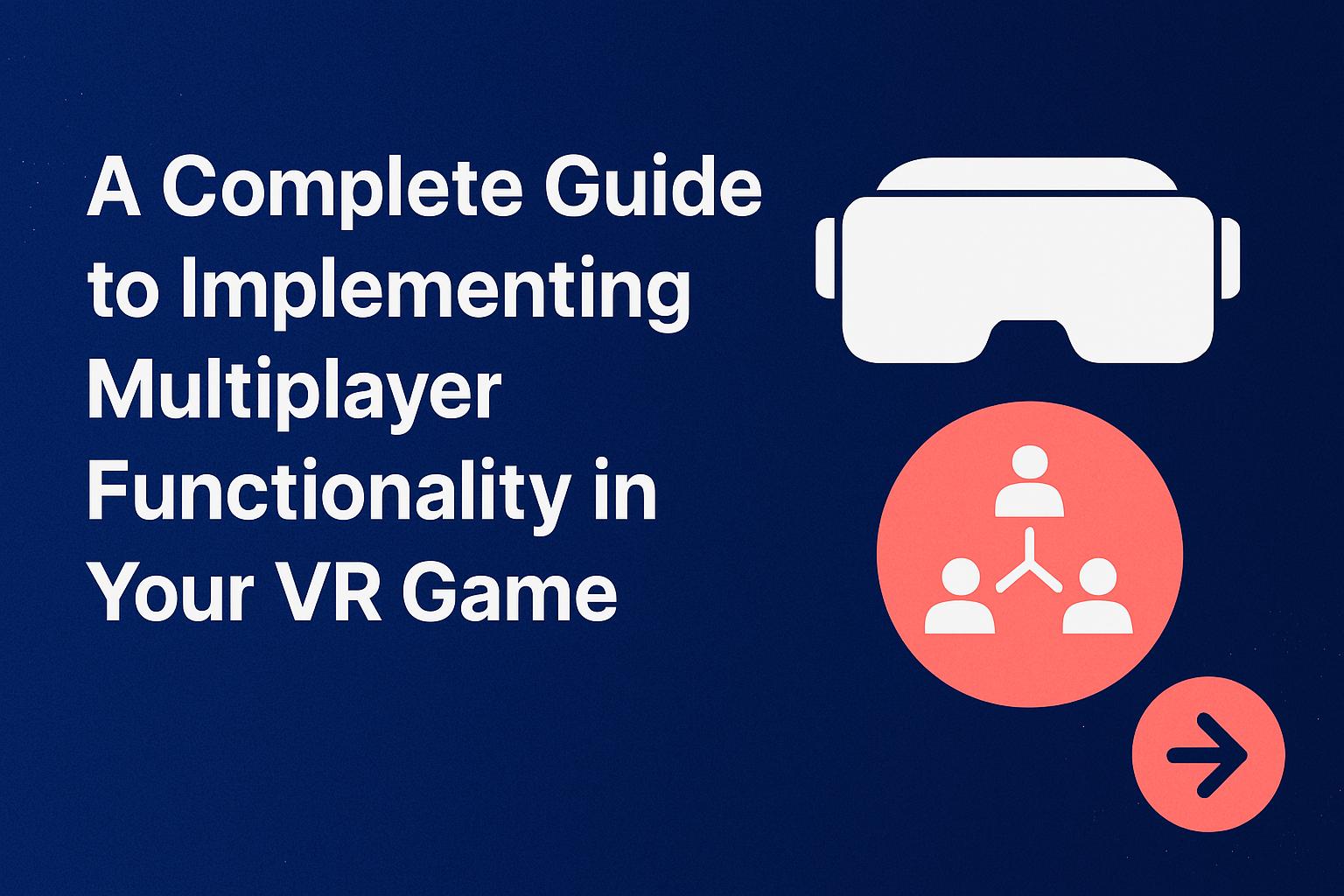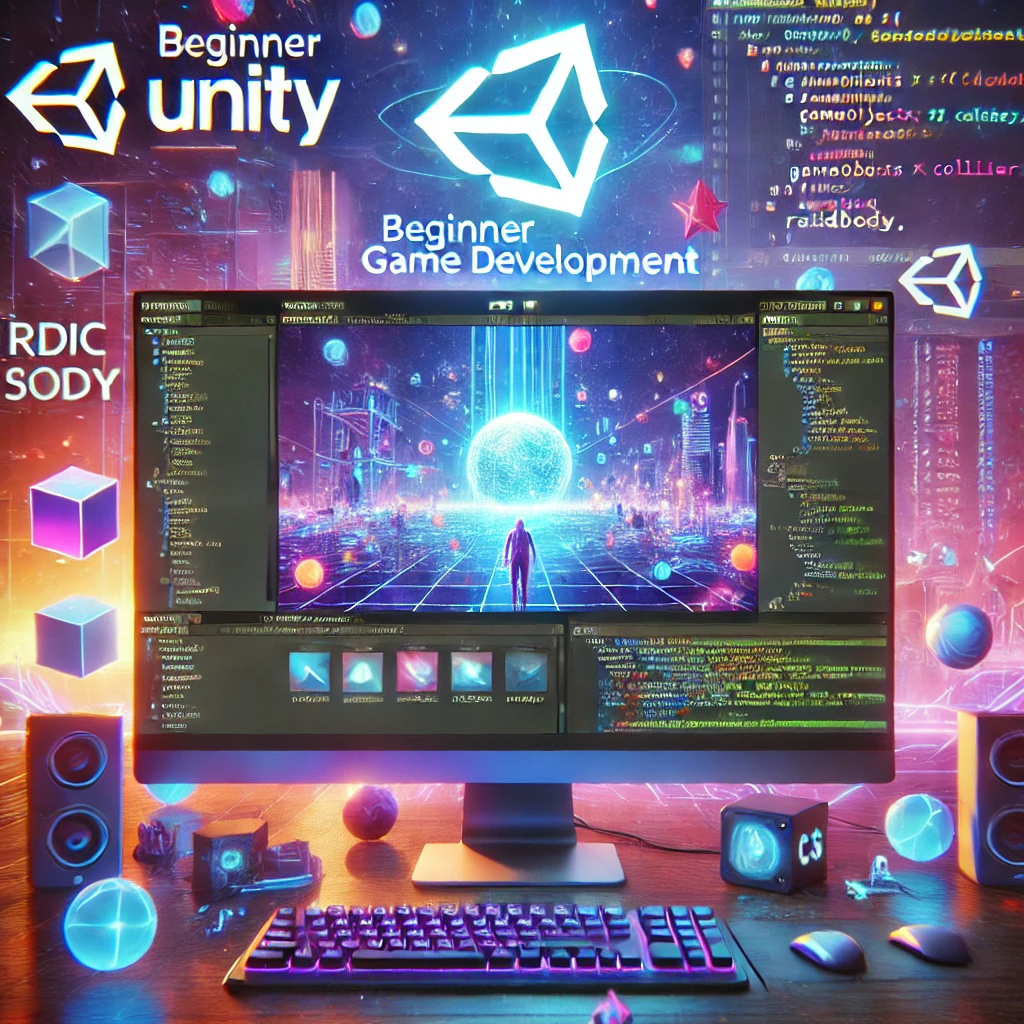Introduction
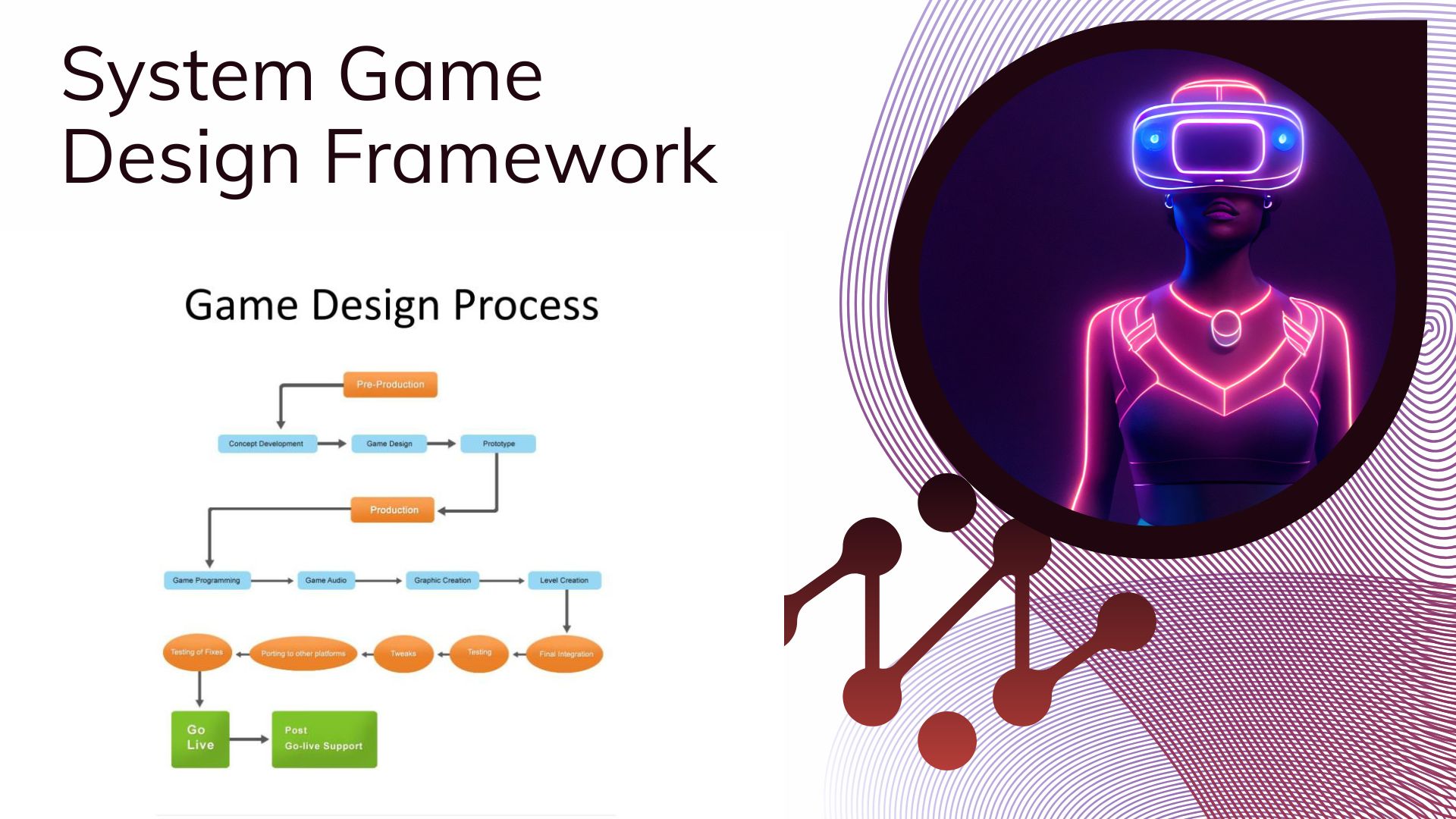

In the ever-evolving landscape of game development, system game design stands out as a pivotal approach that emphasizes interconnected mechanics and emergent gameplay. Unlike linear designs that follow a predetermined path, system game design offers players a sandbox of possibilities, fostering creativity and replayability. This comprehensive guide delves into the intricacies of system game design, providing modern developers with the tools and insights needed to craft engaging and dynamic gaming experiences.
Understanding System Game Design
What is System Game Design?
System game design focuses on creating a network of interrelated mechanics that interact in complex ways, allowing for emergent gameplay. This approach contrasts with scripted designs, where outcomes are predetermined. In systemic games, players can experiment within the game’s rules, leading to unique experiences each time. Notable examples include:
- The Legend of Zelda: Breath of the Wild: Offers a vast open world where physics and chemistry systems interact, enabling creative problem-solving.
- Civilization Series: Players manage various systems like economy, diplomacy, and warfare, each influencing the others.
- Minecraft: A sandbox game where simple mechanics combine to allow complex creations and interactions.
Why Systemic Design Matters
Systemic design enhances player agency, allowing for multiple solutions to challenges and promoting replayability. It encourages players to engage deeply with the game’s mechanics, leading to a more immersive experience. Additionally, systemic design can be more efficient in content development, as the interactions between systems can generate diverse scenarios without the need for handcrafted content.
Core Components of a Game System


Mechanics
Mechanics are the foundational rules and systems that govern gameplay. They define what players can do and how the game responds. Examples include movement controls, resource management, and combat systems. Well-designed mechanics are intuitive and provide meaningful choices to the player.
Dynamics
Dynamics emerge from the interactions between mechanics and player behavior. They represent the real-time behavior of the game as players engage with the mechanics. For instance, in a stealth game, the combination of enemy AI and player movement mechanics creates the dynamic of sneaking past guards.
Aesthetics
Aesthetics pertain to the emotional responses and experiences evoked in the player. They encompass the game’s visual style, sound design, and narrative elements. Aligning aesthetics with mechanics and dynamics ensures a cohesive and engaging player experience.
System Game Design Process
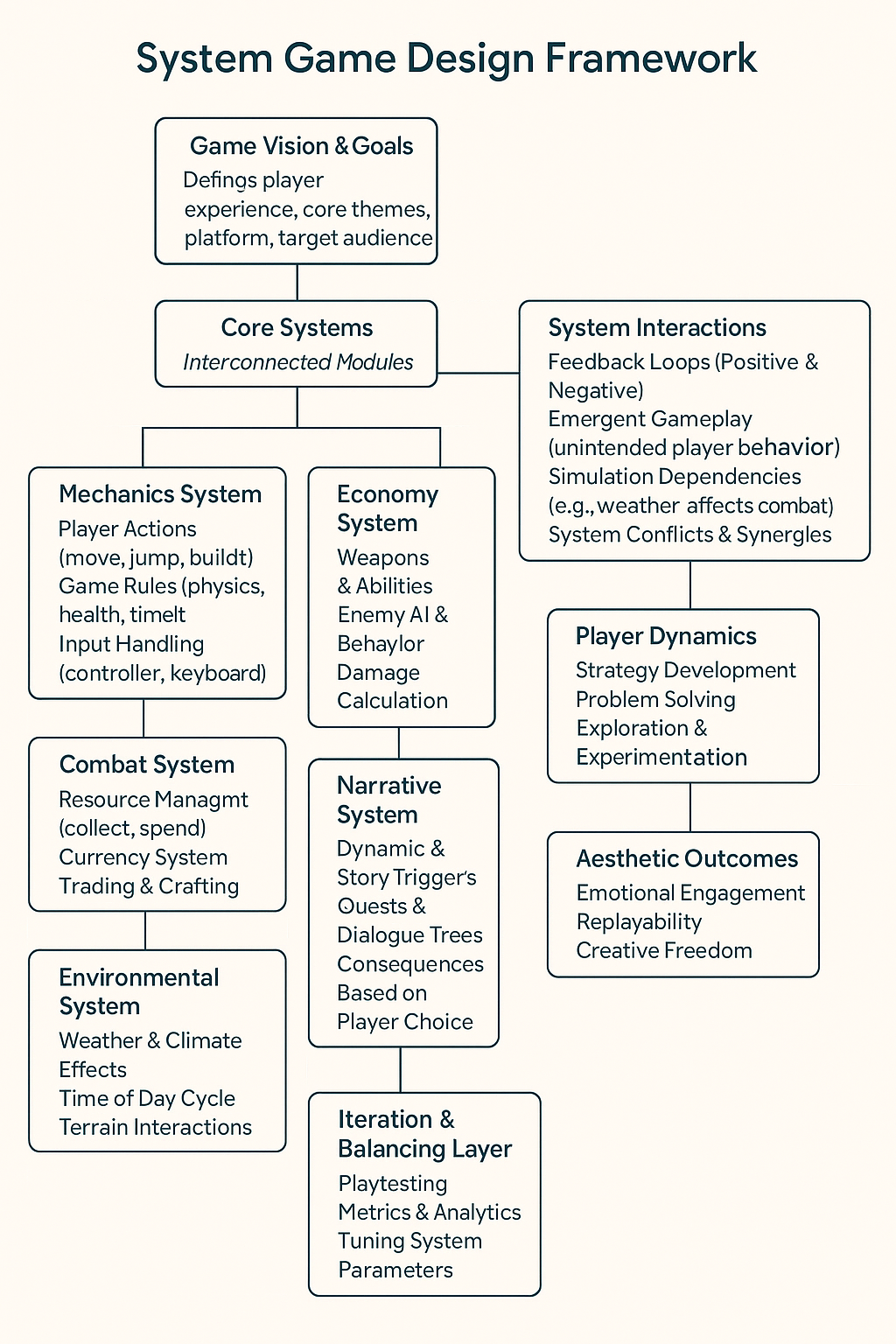

Step 1 – Define Game Vision and Objectives
Begin by establishing a clear vision for the game. Determine the core experience you want to deliver and identify your target audience. Define the platform(s) the game will be available on, as this influences design decisions.
Step 2 – Design Core Systems
Identify and design the primary systems that will drive gameplay. Common systems include:
- Economy: Managing resources, currency, and trade.
- Combat: Mechanics governing battles and encounters.
- Crafting: Creating items or equipment from resources.
- Environment: World-building elements like weather, terrain, and day-night cycles.
Ensure these systems are interdependent and scalable to accommodate future content.
Step 3 – Map Interactions Between Systems
Analyze how different systems interact and influence each other. Create diagrams or flowcharts to visualize these relationships. For example, weather conditions (environment system) might affect combat effectiveness or resource availability (economy system). Understanding these interactions helps in creating a cohesive and dynamic game world.
Step 4 – Prototype and Playtest
Develop prototypes to test core systems and their interactions. Use these prototypes to gather feedback and observe player behavior. Focus on identifying unforeseen interactions and balancing issues. Iterative playtesting is crucial for refining systems and ensuring they work harmoniously.
Step 5 – Iteration and Balancing
Based on playtesting feedback, adjust system parameters to achieve desired gameplay experiences. This may involve tweaking resource generation rates, enemy difficulty, or crafting requirements. Utilize analytics tools to monitor player engagement and identify areas needing refinement.
Best Practices in Systemic Game Design
Embrace Emergent Gameplay
Design systems that allow for unexpected player behaviors and solutions. Encourage creativity by providing tools and mechanics that can be combined in various ways. Emergent gameplay enhances replayability and player satisfaction.
Think in Loops, Not Lines
Focus on creating feedback loops where player actions influence the game world, which in turn affects future player decisions. Positive and negative feedback loops can be used to balance gameplay and maintain player engagement.
Avoid Overengineering
While complexity can enrich gameplay, unnecessary complications can overwhelm players. Strive for simplicity in design, ensuring that each system serves a clear purpose and integrates smoothly with others.
Tools and Frameworks
MDA Framework
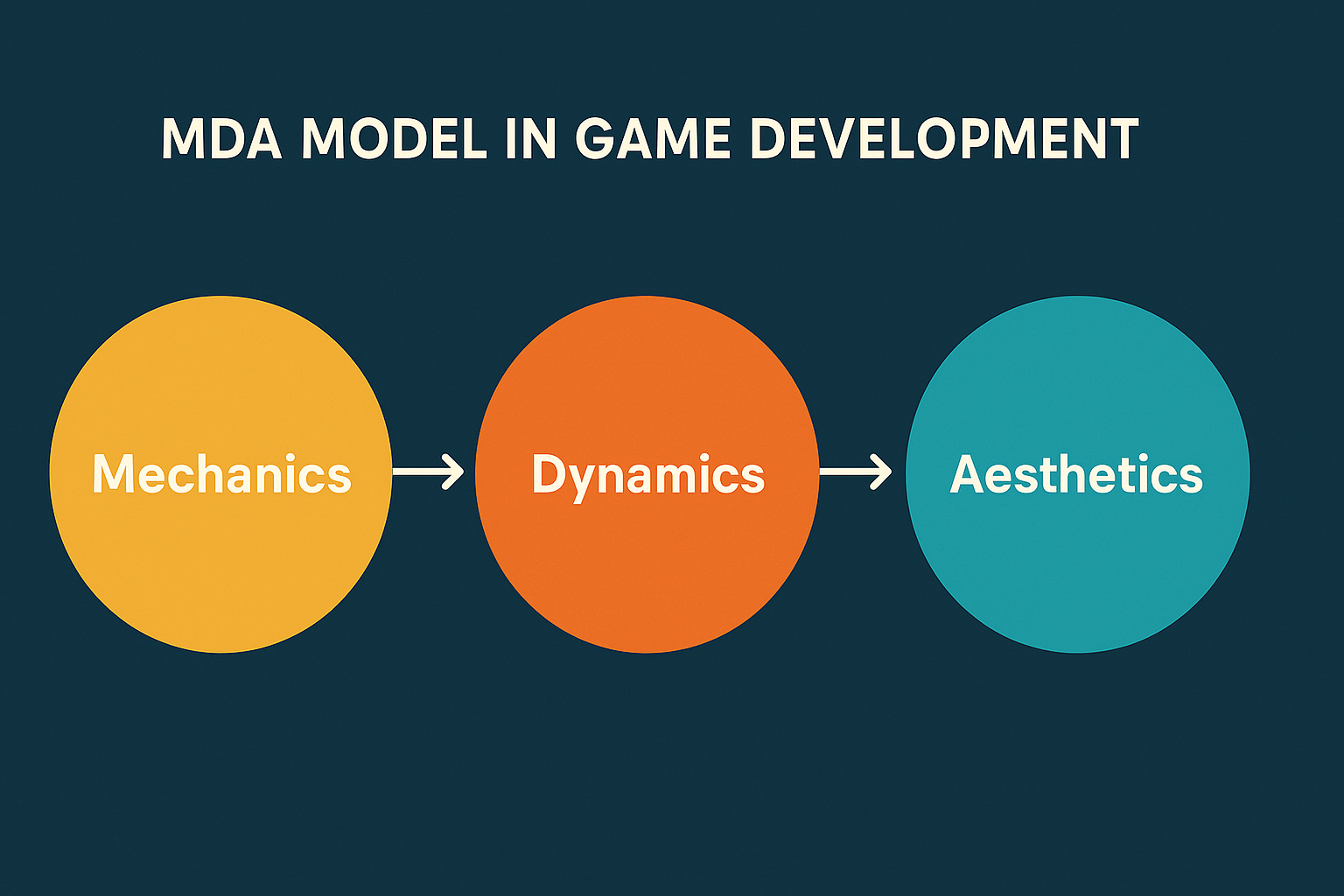

The Mechanics-Dynamics-Aesthetics (MDA) framework is a tool for analyzing and designing games. It helps developers understand how changes in mechanics affect dynamics and, subsequently, player experience (aesthetics).
Simulation Models and FSMs (Finite State Machines)
Simulation models allow for the representation of complex systems and their interactions. FSMs are useful for designing AI behavior, defining states, and transitions based on player actions or environmental factors.
Tools for Prototyping
Utilize game engines like Unity, Unreal Engine, or Godot for rapid prototyping. These platforms offer robust tools for building and testing game systems. For narrative systems, tools like Ink or JSON-based frameworks can be effective.
Real-World Examples of System Game Design
Breath of the Wild – Interaction and Physics Systems
Nintendo’s The Legend of Zelda: Breath of the Wild showcases systemic design through its physics-based interactions. Players can manipulate the environment creatively, such as using metal objects to conduct electricity or setting grass on fire to create updrafts.
RimWorld – AI Storyteller and Emergent Narratives
RimWorld employs an AI storyteller that dynamically generates events based on player actions and colony status. This system creates unique narratives and challenges, ensuring no two playthroughs are the same.
Dwarf Fortress – Deep Simulation and Chaos Theory
Dwarf Fortress is renowned for its intricate simulation of a living world, including detailed character behaviors, environmental factors, and complex systems. Its depth allows for emergent stories and unexpected outcomes, exemplifying systemic design’s potential.
Common Pitfalls and How to Avoid Them
Overcomplexity Without Purpose
Avoid adding systems that do not enhance gameplay or player experience. Each system should have a clear role and integrate seamlessly with others.
Ignoring User Feedback
Player feedback is invaluable for identifying issues and areas for improvement. Engage with your community, conduct surveys, and observe gameplay to inform design decisions.
Poor Documentation and Scalability
Maintain thorough documentation of systems and their interactions. This practice aids in onboarding new team members, troubleshooting, and future scalability. Poor documentation can lead to inconsistencies and challenges when expanding or updating your game.
Conclusion
System game design is a powerful methodology that empowers developers to build deep, dynamic, and replayable games. By focusing on interrelated systems and player-driven outcomes, developers can craft experiences that remain engaging long after the first playthrough. From defining your vision to prototyping, iterating, and balancing, every step contributes to a more cohesive and interactive game world. Mastering this approach is not just a skill—it’s a mindset that champions player agency and creative exploration.
FAQs
What skills are needed for system game design?
Key skills include systems thinking, logic, creativity, player psychology, and proficiency in design tools like Unity or Unreal Engine.
How do I balance multiple game systems?
Use iterative testing, feedback loops, and player analytics to monitor how systems affect one another and adjust parameters accordingly.
Is system game design suitable for mobile games?
Yes, though systems may need simplification for mobile interfaces and shorter session times, systemic principles still apply.
How much testing is needed for systemic gameplay?
Extensive testing is crucial. It ensures interactions are balanced, meaningful, and produce the intended player experiences.
Can AI enhance systemic game design?
Absolutely. AI can dynamically adjust systems based on player behavior, improving personalization, difficulty scaling, and narrative generation.









